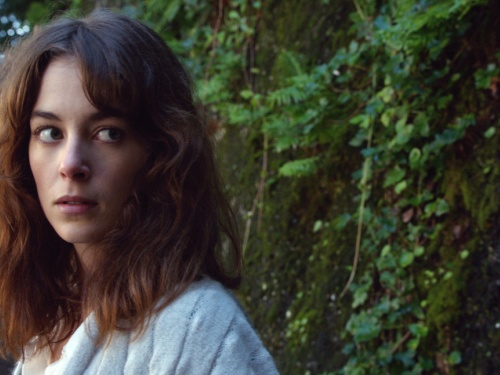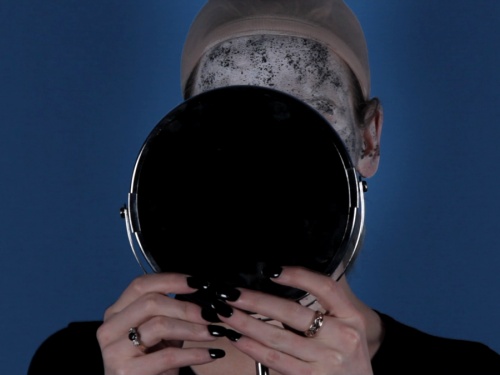Red, White and Blue
The visual power of the Three Colours trilogy
This week the ICA screens Krzysztof Kieślowski's award-winning Three Colours trilogy. Our Cinema Programme Assistant Aga Baranowska explores what makes Kieślowski's final films so cinematically brilliant.
This December the ICA commemorates the 20th anniversary of Krzysztof Kieślowski’s passing with a focus on his Three Colours trilogy: Red, White and Blue. The three films are loosely based on the three colours of the French flag and the three themes of the French Revolution: liberty, equality and fraternity. Despite this, many critics point to the pan-European aspects of the trilogy, with Colin McCabe calling it “a hymn to European cinema”.
The three films take place in three European cities. Blue is set in Paris, White starts in Paris but moves quickly to Warsaw, while Red takes place in Geneva with the protagonists travelling to London towards the end of the film. This pan-European focus is demonstrated within each plotline. In Blue the main protagonists are working on the hymn for the united Europe, while in White the main character Karol experiences the trials of being an Eastern European migrant worker in France. These European connections are perhaps encapsulated in the way the films were distributed. The Three Colours trilogy premiered consecutively at the three major European film festivals. Blue debuted at the Venice Film Festival in September 1993, where it won the Golden Lion, White in Berlin in February 1994, where Kieślowski won the Silver Bear for directing, and Red at Cannes in May 1994. While the themes of a unified Europe would be interesting to further explore, both in relation to the European or individual identity, it is the trilogy’s strong visual aesthetic that came to prominence when I was re-watching the films recently.
Blue's uniqueness comes from Kieślowski’s visual cinematic style in expressing grief. While Juliette Binoche’s powerful acting throughout the film allows the audience to connect with the suffering Julie feels for the loss of her family, it is a range of innovative close-ups that express those feelings even more strongly. In particular, the reflection of the doctor in Julie’s eye in an early scene signals how although she can see, she is not able to process what is happening around her in the aftermath of the accident. Black-outs are another visual element that Kieślowski makes use of in Blue: he fades out the image into blackness for a few seconds in particularly traumatic and difficult moments for Julie as she is trying to piece her life together. This opens up the visual and mental space for both Julie and the audience to take a moment to reflect and process those overpowering emotions associated with losing loved ones.
The visual nature of White is subtler in comparison. Here, Kieślowski uses single objects as signals for what will come later in the film, and the ways in which protagonist Karol’s life will change. When watching the film for the first time, one might miss the importance of these subtle hints. It is only with repeated viewings that those elements take on a richer meaning and allow the viewer to go beyond the plotline to fully appreciate the story. A car is one of these objects to which Kieślowski grants special meaning. After the divorce trial, Karol’s ex-wife leaves him in his car with Polish registration plates. A car comes back triumphantly in the middle of the film as Karol learns of a deal that will make him wealthy while sat inside a vehicle. Finally, towards the end of the film Karol runs his business from the back of his luxury car with a chauffeur being one his closest confidantes. As Karol moves from being homeless to wealthy, a car becomes the visual symbol of his rise to the top. This is just one among many visual clues which add another layer of meaning in the film, with other repeated images including a funeral procession and a suitcase.
In Red, Kieślowski engages in an exploration of the cinematic quality of the colour red that other European filmmakers have done before and after him. While watching the film, scenes from Michelangelo Antonioni’s Red Desert (1964), Ingmar Bergman’s Cries and Whispers (1972), and post-trilogy films such as Pedro Almodovar’s All About My Mother (1999) and Jean-Pierre Jeunet’s Amélie (2001) come to mind in terms of how these directors use red to express the emotions, thoughts, desires and struggles of their female protagonists. This possible line of interpretation allows us as viewers to find new connections and meanings in Red that go beyond the more frequently discussed importance of fate and happenstance.
Kieślowski has been critically-acclaimed as an observer of the human condition in The Decalogue and as a political commentator in his documentaries and early feature works. However his Three Colours trilogy: Red, White and Blue reveal him also as a true master of cinematic style. ■
Krzysztof Kieślowski Focus: Three Colours Trilogy shows until December 20.
This article is posted in: Articles, Film
Tagged with: ICA Cinema, Three Colours











